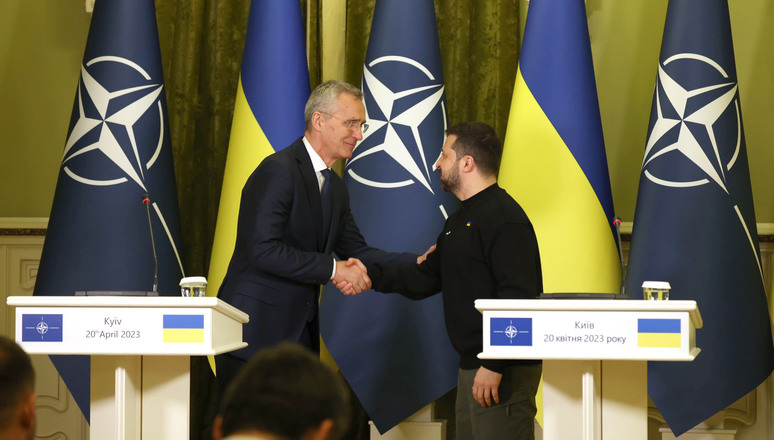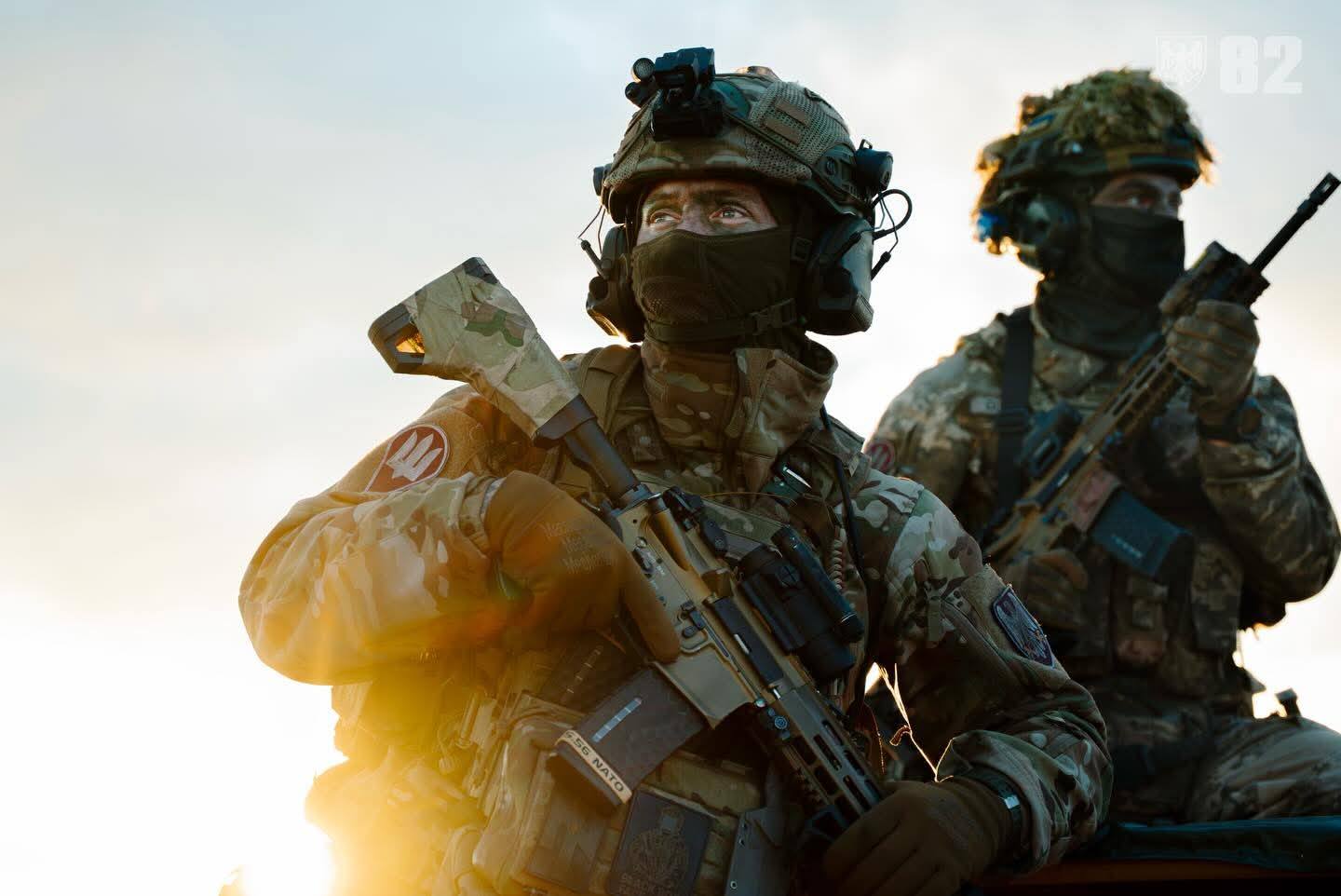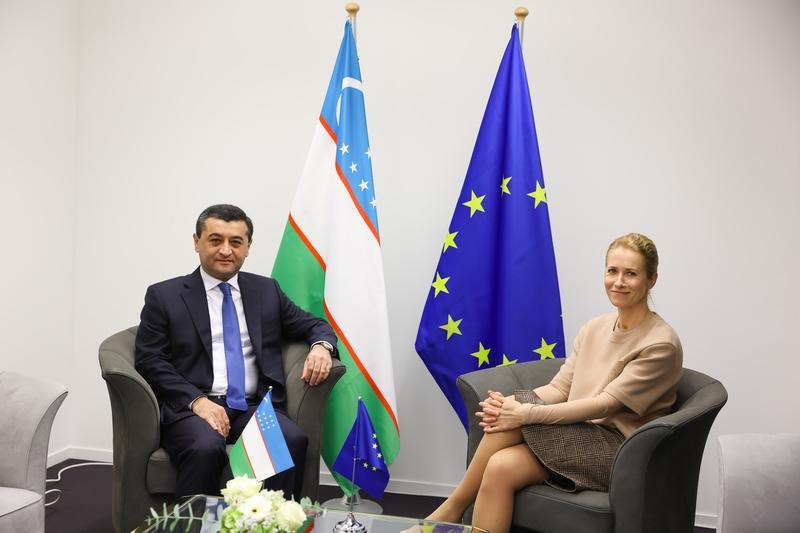
Bilateral Security Agreements as Part of Ukraine’s NATO Accession (Part One)
Bilateral Security Agreements as Part of Ukraine’s NATO Accession (Part One)
Executive Summary:
- Members of the North Atlantic Treaty Organization (NATO) are entering into bilateral security agreements with Ukraine outside the alliance’s and the North Atlantic Treaty’s framework.
- This procedure seems to de-couple allied assistance to Ukraine from the country’s NATO accession process and to delay that process, potentially developing into a substitute for Ukrainian membership.
- Bilateral agreements with Ukraine will need to be integrated into a NATO strategy to defeat Russia in Ukraine and contain Russia in Europe, as well as connect them to Kyiv’s accession process.
The presidents of the United States and Ukraine are set to sign a bilateral security agreement during the North Atlantic Treaty Organization (NATO) summit in Washington from July 9 to 11. US Secretary of State Antony Blinken confirmed this publicly for the first time during his trip to Kyiv on May 14 and 15. Blinken, however, omitted any mention of opening Ukraine-NATO accession negotiations or even a hypothetical timeframe for such a process (President.gov.ua, State.gov, May 14, 15). Most NATO member states and some partner states—more than 30 in total—have decided to sign bilateral security agreements with Ukraine, nine of which have been signed between January and April this year in Kyiv. The Biden administration has scheduled the signing of the US-Ukraine bilateral agreement during NATO’s summit as a “deliverable” there in lieu of advancing Ukraine’s accession to the alliance.
Political and nonbinding agreements are being developed outside of NATO’s and the North Atlantic Treaty’s framework. Their signing is a poor substitute for the firm membership prospect and invitation to accession that Ukraine has long and ardently sought. The invitation to accession remains, nevertheless, Kyiv’s political objective and that of supportive NATO members in the run-up to the Washington summit. The Biden administration and the German government remain the most influential naysayers: Berlin since 2008 and the Biden White House since 2021 (see EDM, May 6, 10, 27, June 1, 2021).
The current profusion of bilateral agreements originates in a Group of Seven (G7) statement on the sidelines of NATO’s 2023 summit in Vilnius, not as part of it and not included in NATO documents since (see EDM, July 13, 17, 19, 2023). Limited in their scope, enforcement power, and lifespan, these bilateral agreements could morph into an alternative to Ukraine’s NATO membership instead of a shortcut. This risk could increase so long as the bilateral agreements are de-coupled from an invitation to Ukraine to commence accession negotiations and a timetable for accession.
“Ukraine’s Euro-Atlantic Future: Paving the Path to Peace and Security,” a report by the International Task Force on Ukraine’s Security and Euro-Atlantic Integration, addresses the limitations of the emerging system of bilateral security agreements. The report proposes effective remedies and calls for linking the bilateral agreements firmly to Ukraine’s accession to NATO (President.gov.ua, May 14). Former NATO Secretary-General Anders Fogh Rasmussen chairs this task force, with Ukrainian Presidential Office Chief Andriy Yermak as co-chair.
Launched, fortuitously or otherwise, on the day of Blinken’s Kyiv visit, this is the task force’s second major report on guaranteeing Ukraine’s security through NATO member states pending—and leading to—Ukraine’s accession to the alliance. An earlier report, “The Kyiv Security Compact: International Security Guarantees for Ukraine,” launched in late 2022 in the wake of a successful Ukrainian counteroffensive (President.gov.ua, September 13, 2022; see EDM, December 16, 2022). It seeded the idea to create a system of bilateral security agreements between individual NATO member states and Ukraine.
The system now evolving is built on bilateralism without, however, the benefit of a framework agreement, such as the “Compact” proposed in 2022, had envisaged ensuring the system’s coherence. Operating by design outside NATO’s framework, the planned system of more than 30 bilateral agreements lacks a coordinating body. The currently conceived system seems to lack a common strategic purpose beyond the participant countries’ efforts to address Ukraine’s war matériel shortages on an emergency basis. The Ramstein Group (Ukraine Defense Contact Group) coordinates the materiel supplies to Ukraine, operating outside NATO, as will the bilateral security agreements between allied states and Ukraine. It is not yet clear how, or whether, the Ramstein Group would coordinate the execution of bilateral security agreements between allied states and Ukraine.
Allied leaders have yet to integrate these agreements into a strategy to defeat Russia in Ukraine and contain Russia in Europe. The report just released responds to Ukraine’s steadily worsening military and demographic situation. It warns that “the current level of support is not sufficient to guarantee the viability of Ukraine as a sovereign and independent country.” The report recommends major quantitative and qualitative changes to current policies. Recommendations are apparently addressed to putatively willing allies or ad hoc groups of allies, not to NATO “as NATO.” The recommendations include:
- Signaling that the presence of allied ground troops inside Ukraine, even engaging Russian forces, is not off the table and resorting to strategic ambiguity in this respect as a standard approach (apparently encouraged by French President Emmanuel Macron’s recent suggestions);
- Spending 0.25 percent of NATO allies’ aggregate gross domestic products on military assistance to Ukraine, amounting to some $100 billion per year (an amount coinciding with that proposed by NATO Secretary-General Jens Stoltenberg recently in a different context);
- Allocating the $300 billion of frozen Russian assets to finance Ukraine’s defense and reconstruction;
- Lifting restrictions on the types of weapons delivered to Ukraine and allowing the use of allied-delivered weapons on targets on Russian territory;
- Creating an extended air defense shield over a clearly defined area of western Ukraine, thus allowing Ukraine’s own air defense systems to be transferred from there to the frontlines or to protection cities in eastern Ukraine;
- Undertaking a freedom of navigation operation and demining mission in the Black Sea (no suggestion about persuading Türkiye to allow access through the Straits, bearing in mind that Türkiye has not yet offered to sign a bilateral security agreement with Ukraine);
- Envisaging a possible mission of allied countries to train Ukrainian troops on Ukrainian territory (such a mission operated successfully prior to Russia’s all-out invasion of Ukraine); and
- Deploying civilian contractors or military technicians to service military equipment in Ukraine rather than sending that equipment to NATO territory for servicing.
Allied political leaders will need to consider such recommendations seriously to turn the tide of the war in Ukraine. Starting accession talks with Ukraine at the Washington summit is the twin side of a strategy to turn the tide—in both Ukraine’s and NATO’s favor (see Part Two).


